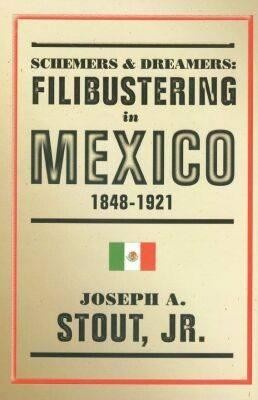
- We will send in 10–14 business days.
- Author: Joseph A Stout
- Publisher: Texas Christian University Press
- ISBN-10: 0875652581
- ISBN-13: 9780875652580
- Format: 16.3 x 23.6 x 2 cm, kieti viršeliai
- Language: English
- SAVE -10% with code: EXTRA
Reviews
Description
In the mid-nineteenth century various groups formed north of the border to invade Mexico. They were called filibusters (from the Dutch vribuiter, meaning pirate or free booty). The Mexican government saw these invasions as a threat to sovereignty. To Mexico it was significant that the groups recruited, organized, and plotted their entradas from the United States in full view of the U.S. government even as newspapers in both countries published dozens of articles about the endeavors.
There were many types of filibusters, from small groups of cutthroats who were satisfied with raiding and stealing, to those whose goal was to conquer territory. Many names of the privateers are familiar--William Walker and Henry Alexander Crabb, for instance. Others remain elusive, and they are the focus of Joseph A. Stout Jr.'s book. In the mid-nineteenth century José MarÃa Carvajal took his chances in Tamaulipas and Coahuila, and Charles de Pindray plotted to establish a mining colony in Sonora. Juan Napoleón Zerman had the audacity to raise a small army and invade Baja California wearing an absurd uniform capped off with a sombrero decorated with chicken feathers. None of the filibusters were successful and many men lost their lives in chimeric escapades along the border.EXTRA 10 % discount with code: EXTRA
The promotion ends in 21d.09:22:07
The discount code is valid when purchasing from 10 €. Discounts do not stack.
- Author: Joseph A Stout
- Publisher: Texas Christian University Press
- ISBN-10: 0875652581
- ISBN-13: 9780875652580
- Format: 16.3 x 23.6 x 2 cm, kieti viršeliai
- Language: English English
In the mid-nineteenth century various groups formed north of the border to invade Mexico. They were called filibusters (from the Dutch vribuiter, meaning pirate or free booty). The Mexican government saw these invasions as a threat to sovereignty. To Mexico it was significant that the groups recruited, organized, and plotted their entradas from the United States in full view of the U.S. government even as newspapers in both countries published dozens of articles about the endeavors.
There were many types of filibusters, from small groups of cutthroats who were satisfied with raiding and stealing, to those whose goal was to conquer territory. Many names of the privateers are familiar--William Walker and Henry Alexander Crabb, for instance. Others remain elusive, and they are the focus of Joseph A. Stout Jr.'s book. In the mid-nineteenth century José MarÃa Carvajal took his chances in Tamaulipas and Coahuila, and Charles de Pindray plotted to establish a mining colony in Sonora. Juan Napoleón Zerman had the audacity to raise a small army and invade Baja California wearing an absurd uniform capped off with a sombrero decorated with chicken feathers. None of the filibusters were successful and many men lost their lives in chimeric escapades along the border.

Reviews